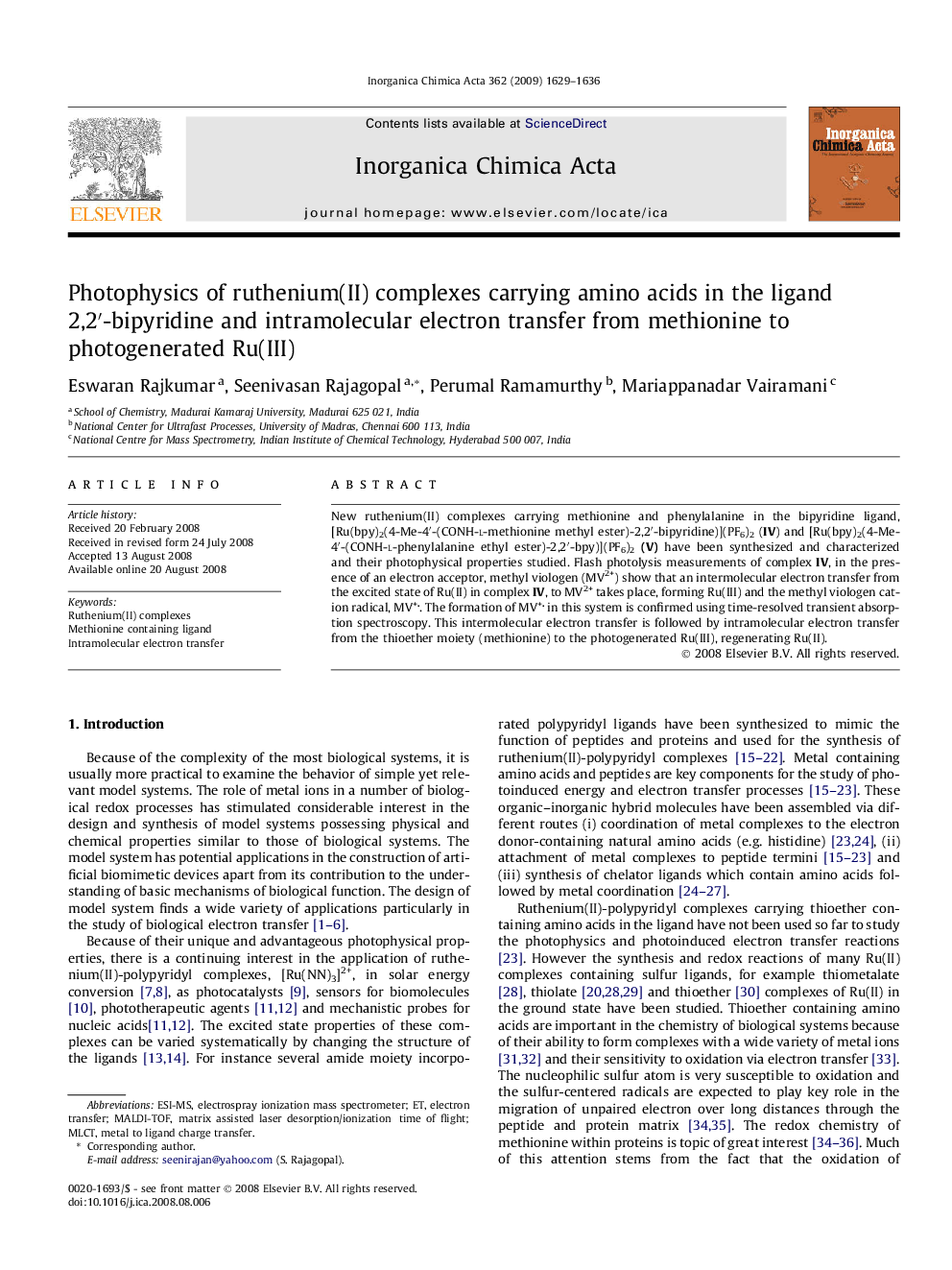| Article ID | Journal | Published Year | Pages | File Type |
|---|---|---|---|---|
| 1312701 | Inorganica Chimica Acta | 2009 | 8 Pages |
New ruthenium(II) complexes carrying methionine and phenylalanine in the bipyridine ligand, [Ru(bpy)2(4-Me-4′-(CONH-l-methionine methyl ester)-2,2′-bipyridine)](PF6)2 (IV) and [Ru(bpy)2(4-Me-4′-(CONH-l-phenylalanine ethyl ester)-2,2′-bpy)](PF6)2(V) have been synthesized and characterized and their photophysical properties studied. Flash photolysis measurements of complex IV, in the presence of an electron acceptor, methyl viologen (MV2+) show that an intermolecular electron transfer from the excited state of Ru(II) in complex IV, to MV2+ takes place, forming Ru(III) and the methyl viologen cation radical, MV+. The formation of MV+ in this system is confirmed using time-resolved transient absorption spectroscopy. This intermolecular electron transfer is followed by intramolecular electron transfer from the thioether moiety (methionine) to the photogenerated Ru(III), regenerating Ru(II).
Graphical abstractNew ruthenium(II) complexes carrying methionine and phenylalanine in the bipyridine ligand, [Ru(bpy)2(4-Me-4′-(CONH-l-methionine methyl ester)-2,2′-bipyridine)](PF6)2 (IV) and [Ru(bpy)2(4-Me-4′-(CONH-l-phenylalanine ethyl ester)-2,2′-bpy)](PF6)2 (V) have been synthesized and characterized and their photophysical properties studied. Flash photolysis measurements of complex IV, in the presence of an electron acceptor, methylviologen (MV2+) show that an intermolecular electron transfer from the excited state of Ru(II) in complex IV, to MV2+ takes place, forming Ru(III) and the methylviologen cation radical, MV+. The formation of MV+ in this system is confirmed using time-resolved transient absorption spectroscopy. This intermolecular electron transfer is followed by intramolecular electron transfer from the thioether moiety (methionine) to the photogenerated Ru(III), regenerating Ru(II).Figure optionsDownload full-size imageDownload as PowerPoint slide
